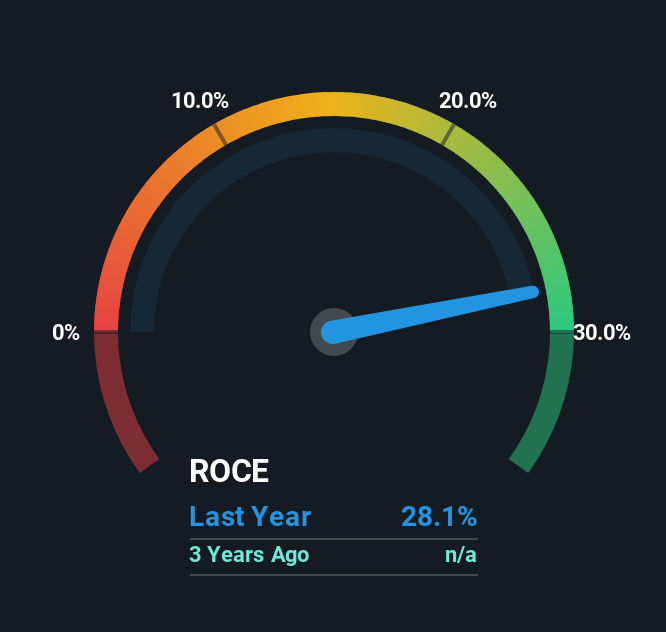Nam Cheong (SGX:1MZ) Is Achieving High Returns On Its Capital
What are the early trends we should look for to identify a stock that could multiply in value over the long term? Firstly, we'd want to identify a growing return on capital employed (ROCE) and then alongside that, an ever-increasing base of capital employed. If you see this, it typically means it's a company with a great business model and plenty of profitable reinvestment opportunities. Speaking of which, we noticed some great changes in Nam Cheong's (SGX:1MZ) returns on capital, so let's have a look.
What Is Return On Capital Employed (ROCE)?
Just to clarify if you're unsure, ROCE is a metric for evaluating how much pre-tax income (in percentage terms) a company earns on the capital invested in its business. Analysts use this formula to calculate it for Nam Cheong:
Return on Capital Employed = Earnings Before Interest and Tax (EBIT) ÷ (Total Assets - Current Liabilities)
0.28 = RM295m ÷ (RM1.3b - RM208m) (Based on the trailing twelve months to March 2025).
So, Nam Cheong has an ROCE of 28%. That's a fantastic return and not only that, it outpaces the average of 4.4% earned by companies in a similar industry.
Check out our latest analysis for Nam Cheong

Historical performance is a great place to start when researching a stock so above you can see the gauge for Nam Cheong's ROCE against it's prior returns. If you'd like to look at how Nam Cheong has performed in the past in other metrics, you can view this free graph of Nam Cheong's past earnings, revenue and cash flow.
What The Trend Of ROCE Can Tell Us
The trends we've noticed at Nam Cheong are quite reassuring. The data shows that returns on capital have increased substantially over the last five years to 28%. The amount of capital employed has increased too, by 69%. So we're very much inspired by what we're seeing at Nam Cheong thanks to its ability to profitably reinvest capital.
In another part of our analysis, we noticed that the company's ratio of current liabilities to total assets decreased to 17%, which broadly means the business is relying less on its suppliers or short-term creditors to fund its operations. Therefore we can rest assured that the growth in ROCE is a result of the business' fundamental improvements, rather than a cooking class featuring this company's books.
Our Take On Nam Cheong's ROCE
A company that is growing its returns on capital and can consistently reinvest in itself is a highly sought after trait, and that's what Nam Cheong has. Since the stock has returned a staggering 229% to shareholders over the last year, it looks like investors are recognizing these changes. So given the stock has proven it has promising trends, it's worth researching the company further to see if these trends are likely to persist.
On a final note, we've found 4 warning signs for Nam Cheong that we think you should be aware of.
Nam Cheong is not the only stock earning high returns. If you'd like to see more, check out our free list of companies earning high returns on equity with solid fundamentals.
Valuation is complex, but we're here to simplify it.
Discover if Nam Cheong might be undervalued or overvalued with our detailed analysis, featuring fair value estimates, potential risks, dividends, insider trades, and its financial condition.
Access Free AnalysisHave feedback on this article? Concerned about the content? Get in touch with us directly. Alternatively, email editorial-team (at) simplywallst.com.
This article by Simply Wall St is general in nature. We provide commentary based on historical data and analyst forecasts only using an unbiased methodology and our articles are not intended to be financial advice. It does not constitute a recommendation to buy or sell any stock, and does not take account of your objectives, or your financial situation. We aim to bring you long-term focused analysis driven by fundamental data. Note that our analysis may not factor in the latest price-sensitive company announcements or qualitative material. Simply Wall St has no position in any stocks mentioned.
About SGX:1MZ
Nam Cheong
An investment holding company, provides shipbuilding and vessel chartering.
Excellent balance sheet and good value.
Market Insights
Community Narratives



